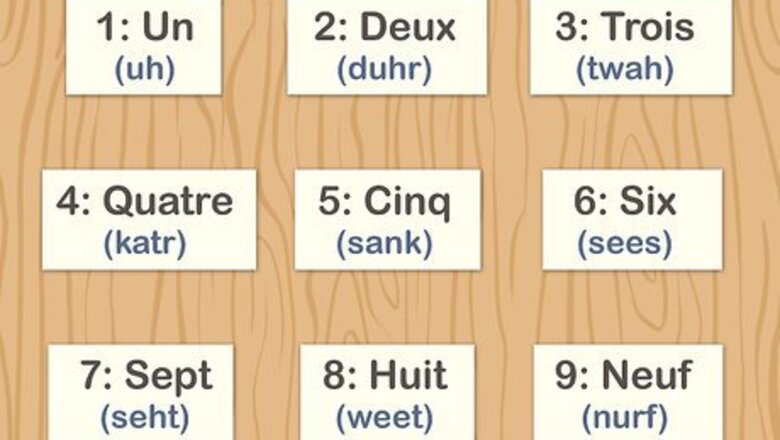
views
Counting from 1 to 29 in French

Memorize the numbers 1 to 9. As in English and other languages, the numbers 1 through 9 in French are unique words that you can only learn by memorizing. Luckily, they aren't too difficult, and there are some tricks you can use to help. Un (uh) is 1. The same word is used for the French masculine article meaning "a," as in "un café" (which would mean either "a coffee" or "one coffee"). Deux (duhr) is 2. You can remember this by thinking of the word "double." Trois (twah) is 3. Remember this by thinking how similar this word is to "triple." Quatre (katr) is 4. Remember this by thinking about the word "quarter," which is one-fourth of something. Cinq (sank) is 5. Six (sees) is 6. It looks just like the English word "six," but is pronounced differently. Sept (seht) is 7. Huit (weet) is 8. Neuf (nurf) is 9.
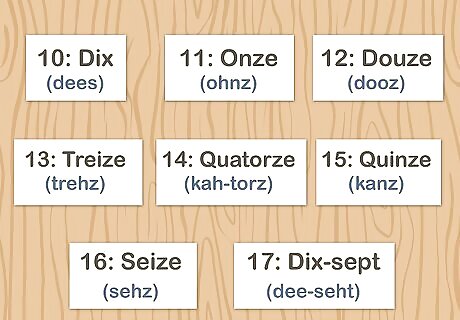
Move on to the numbers 10 through 19. To help you remember 11 through 16, think of taking the numbers 1 through 9 and adding a z sound to the end of them. For 17 through 19, you form the number word just as you do for the rest of the numbers – by saying the first digit (in the tens spot) and then the second digit (in the ones spot). Dix (dees) is 10. Onze (ohnz) is 11. You can remember this by thinking of the English word "ones." The number 11 is made up of two digits, both of them "ones." Douze (dooz) is 12. Treize (trehz) is 13. Quatorze (kah-torz) is 14. Quinze (kanz) is 15. Seize (sehz) is 16. Dix-sept (dee-seht) is 17. Dix-huit (dees-weet) is 18. Dix-neuf (dees-nurf) is 19.
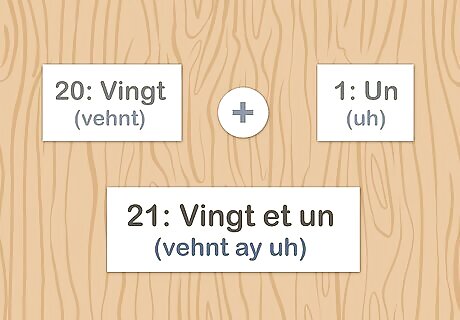
Add the numbers 1 through 9 to vingt (vehn) for numbers 21 through 29. Once you get to 20, number words in French follow the same pattern that is also used in English. The only exception is 21, for which you'll add an et (and) between the words for the digits. Vingt et un (vehnt ay uh) is 21. The literal translation would be "twenty and one." Note that you pronounce the t when it comes before a vowel sound. It is silent if it comes before a consonant. Vingt-deux (vehn duhr) is 22. Vingt-trois (vehn twah) is 23. Vingt-quatre (vehn katr) is 24. Vingt-cinq (vehn sank) is 25. Vingt-six (vehn sees) is 26. Vingt-sept (vehn seht) is 27. Vingt-huit (vehn weet) is 28. Vingt-neuf (vehn nurf) is 29.
Counting from 30 to 50 in French
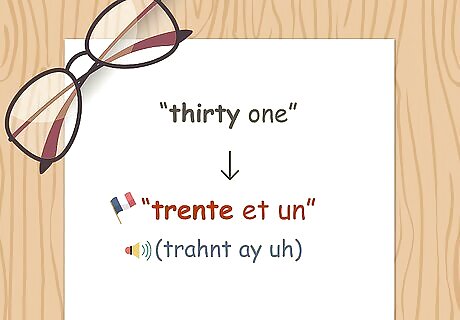
Say trente (trahnt) for the number 30. All numbers in the 30s start with the word for the number 30, followed by the correct word for the digit in the ones place (numbers 1 through 9). This is the same pattern you saw for the French words for numbers in the 20s. Don't forget to add an et between the digits for 31 – trente et un (trahnt ay uh). While the t at the end of vingt is silent, the t is pronounced in trente and other French number words when it is followed by an e. So, for example, you would say trahnt-katr for 24.

Use quarante (kah-rohnt) to count from 40 to 49. Continuing with the same pattern, start with 40 and then add the correct word for the digit in the ones place (numbers 1 through 9). Add an et between the digits for 41 – quarante et un (kah-rohnt ay uh). The word quarante is a good opportunity to practice your French r. Pull the sound from the back of your throat, as though you are gargling.
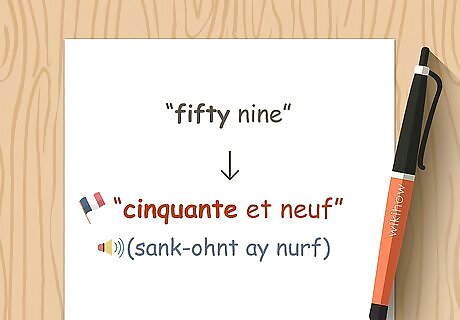
Learn cinquante (sank-ohnt) to finish counting to 50. Cinquante means 50 in French, but there's no need to stop there. As before, you can simply add the correct word for the digit in the ones place (numbers 1 through 9) to the word cinquante. Not only can you count to 50, you can easily count to 59 using number words you already know. Cinquante has two vowels that are followed by an n, signaling a nasal pronunciation. This makes it a good word for you to practice making French nasal vowel sounds. Remember that 51 would be cinquante et un (sank-ohnt ay uh).
Mastering French Pronunciation
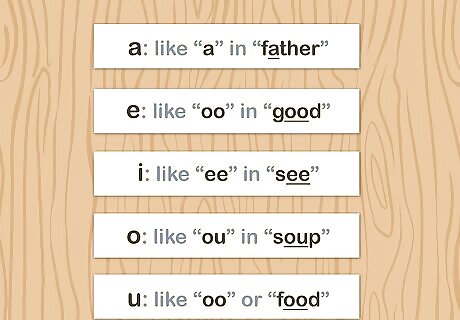
Start with the French vowels. While the French language has a lot of accent and diacritical marks (the marks over letters) that can trip up beginners, none of these marks are present in French numbers. Getting down the basic vowel sounds and practicing them with numbers can help improve your overall French pronunciation. A is pronounced like the a in the English word "father." The combination ai is pronounced like the ai in "bait," and au like "oh." An e without any accent marks is pronounced like the oo in the English word "good," as is the combination eu. When coming before an f, it sounds more like ur, as in neuf (9). I is pronounced like the ee in "see." You notice this in the number words six and dix. O is pronounced like "oh." The combination ou sounds like the same vowel combination in the English word "soup." U may be pronounced similar to the oo in the English word "food," although the exact sound doesn't exist in English. Since you won't find this u sound in number words, feel free to skip it for now. Anytime a vowel is followed by an n, it is a nasal vowel. This will alter your basic pronunciation. For example, in the word un (1), the u sounds more like eh or uh.
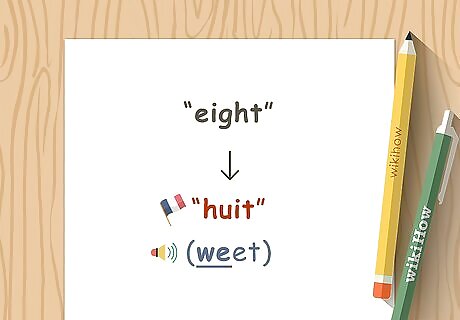
Pronounce most French consonants as you would in English. French uses essentially the same alphabet as English, and most of the consonants are pronounced similarly. The ones that are pronounced differently are fairly easy to remember once you've had some practice. When the letter h appears at the beginning of a word, it's usually silent. For example, with the word huit (8), the w sound comes from the pronunciation of the vowel combination ui. The h at the beginning is silent. Whenever you see a q or qu in French, it is pronounced like an English k. You can see this in the number words quatre (4) and quatorze (14). This pronunciation is found occasionally in English words, such as etiquette, which are loanwords from French. The letter c is pronounced like an English s if it comes before an e or an i. This isn't really different from English, which also has a soft c, as in the words "office" and "face." In fact, most of the English words with soft c came from French.

Say the French r from the back of your throat. The French r sounds quite a bit different than the English r. This is because the sound comes from the back of your throat, rather than the front of your mouth. The French r is guttural, but not as guttural as some sounds in other languages, such as German. Think in terms of the sound you would make when you were gargling, but not the sound you would make if you were clearing your throat. To find the correct place to make the French r sound, make a k sound with your mouth closed. You should feel it at the base of your tongue. Practice making an r sound from that spot. It can take some time to get it right, but until you do, take comfort knowing that you will still be understood if you use a regular English r or a slightly trilled r sound.

Practice the nasal sounds until you get them right. Nasal sounds figure prominently in many French number words, including vingt (20) and un (1). To make the nasal sound correctly, cut off air flow in your mouth and send part of your exhalation through your nose instead. Generally speaking, if you see an ng in a word, it is a signal to pronounce the vowel nasally. Many English words with an ng, such as sang, are also said with a slight (or significant, depending on your regional accent) nasal twang.
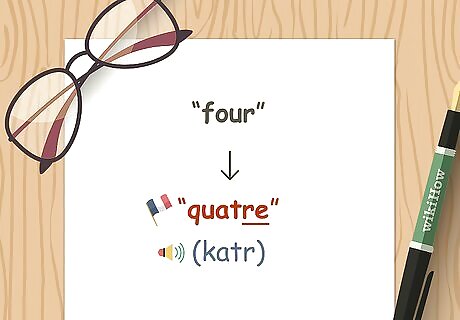
Leave off the last letter when pronouncing many French words. You may be familiar with the silent e in English, but French also has many silent consonants. Some of these lettres muettes (silent letters) appear regularly in French number words. For example, in the word vingt (20), the g and t are essentially silent (although the ng signals that this word should be pronounced nasally). The word quatre (4) is another French number word with silent letters – here, the r and the e are both silent.












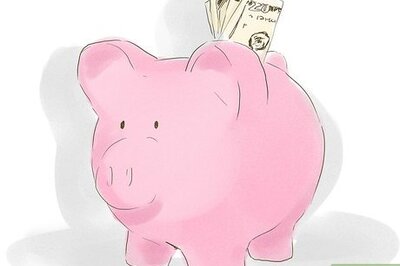






Comments
0 comment